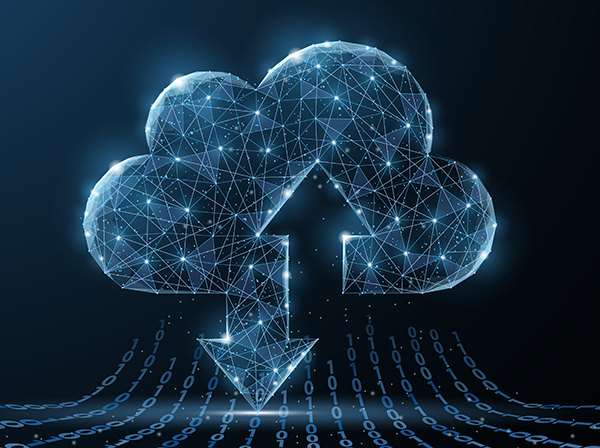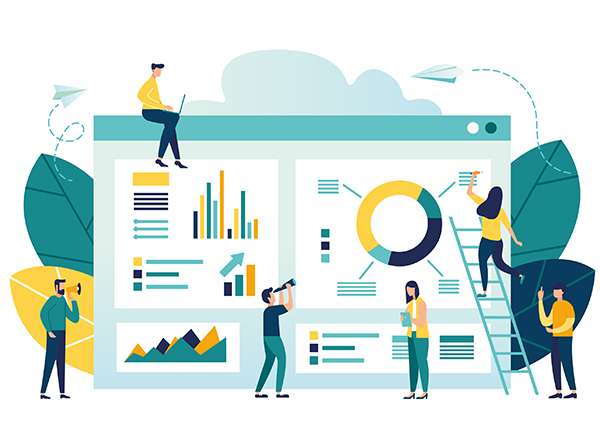In 2024, the trends of cloud computing will be influenced by increasing cloud costs and the expanding use of advanced AI (such as ChatGPT). Businesses continue to move their operations to the cloud, with the goals of becoming more efficient and improving their customers’ experiences. Organizations will continue to use cloud services as a way to access new technologies and improve the efficiency of their own operations.
Cloud computing makes new technologies accessible by removing the need to build or purchase the expensive infrastructure needed to support these intensive computing applications.
Cloud computing offers organizations several benefits, such as data backup and recovery, security, and software solutions. It also supports resources such as scalable storage, servers, and databases, by way of the internet. This allows users to access these resources remotely with an appropriate device and an internet connection.
Almost all businesses currently use the internet, and many have begun working with clouds. Sid Nag, the vice president analyst for Gartner, said,
“Current inflationary pressures and macroeconomic conditions are having a push and pull effect on cloud spending. Cloud computing will continue to be a bastion of safety and innovation, supporting growth during uncertain times due to its agile, elastic, and scalable nature.”
Optimizing Use of the Hybrid and Multi-Clouds
As the cost of using cloud resources increases, more and more businesses are developing strategies that minimize wasteful use of the cloud, in turn saving money. Cost-effective strategies can include the use of hybrid clouds and multi-clouds. Hybrid clouds involve using a combination of on-premises computers and the cloud. Multi-clouds involve using a combination of different clouds.
The use of hybrid and multi-clouds is a trend in cloud computing that should continue throughout 2024 and beyond.
Hybrid cloud strategies typically support working on projects and business processes the on-premises computer system can’t handle. Early on, many businesses shifted all their storage to the cloud because the cloud offered infinite, inexpensive storage, and possibly better security.
But times change. Prices for storage have increased. Simultaneously, the need for data storage has increased, causing managers to reassess their cloud computing strategies. For example, the strategic storage of critical data can be a cost-saving factor. If security for your on-premises computers is reasonably good, where is it most cost-effective to store your master data?
Several organizations have developed a multi-cloud strategy because it offers the flexibility of using a variety of tools. For instance, an organization might use one cloud that specializes in providing services for the internet of things and another cloud for designing their own apps and software.
The use of hybrid and multi-clouds can provide the advantages of flexibility and short-term access to tools that would be too expensive to purchase and install in on-premises computer systems. Hybrid and multi-cloud systems provide advanced solutions that will continue to grow in popularity.
Using the Cloud to Operate in Real Time
Several clouds support platforms (software that collects and processes data for a specific purpose) that use real-time data, allowing researchers and AIs to develop accurate insights. Cloud analytics platforms and customer data platforms are two examples.
A cloud analytics platform analyzes data and provides business intelligence in real time. They are extremely flexible and fast, which is necessary for the use of real-time analytics. A cloud analytics platform allows businesses to react to abrupt changes almost instantly. It also improves the quality of the decision-making by providing up-to-date information.
Customer data platforms help businesses to improve the customer experience with the use of real-time data. Many organizations have shifted, or will shift to, customer data platforms. They operate by consolidating individual customer profiles, connecting recorded behaviors to customers, and supporting the personalization of advertisements and the overall customer experience.
ChatGPT and the Cloud
Although ChatGPT is not involved directly with cloud computing, it can work with cloud technologies to provide a variety of services. ChatGPT can help businesses to improve efficiency and improve customer experiences by providing human-like conversations.
OpenAI, the organization that developed ChatGPT, has made the Microsoft Azure Cloud available for this purpose (the Azure OpenAI Service). ChatGPT can be used inside the cloud to support several tasks and processes. Some are listed below:
- Improved AI/human interaction
- Code generation
- Analyzing large amounts of text and providing a summary
Blockchain and Security
Blockchain has become a core component of cloud security. It is a decentralized database that allows users to authenticate transactions and secure information-sharing between different parties. A centralized database stores all the data in one location, which makes it vulnerable to hacking.
Blockchain supports a list of records, called blocks, which are linked together using cryptography.
Through the use of blockchain, each cloud user has sole control over their data.
In blockchains, there are no central points of failure. This is because the data has been distributed across a network of nodes (a network of computers, each computer acting as a node). This makes it very difficult for hackers to access and corrupt the data.
Using the Cloud to Promote Transformation and Innovation
By avoiding expensive investments in the organization’s architecture and infrastructure, a business can use the cloud to launch initiatives quickly with tools from the cloud.
Cloud technology has acted as a catalyst for many transformative technologies. These new technologies are used to personalize customer experiences, automate routine tasks, and provide valuable insights. Accessing the technology of the cloud can open doors to a variety of transformative technologies, including:
- The IoT (Internet of Things)
- Blockchain
- Apps development
- DNA technology
- Automation
- Artificial intelligence
The cloud and its tools are also being used for innovation. Innovation, the process of generating and developing new ideas, can be used in the creation of new products or services.
Cloud-based tools, such as Microsoft 365 or Google Workspace, can help staff brainstorm and organize ideas with other team members, or even external collaborators. Mural and Miro are useful for creating visual maps that can structure a group’s thoughts and generate insights.
Training Staff for the Cloud
Shifting from an on-premises computer system to a hybrid/multi-cloud system requires upskilling key members of the staff (and perhaps hiring new staff). Transitioning to a hybrid/multi-cloud system also requires the on-premises team to learn how to manage the new workloads coming from the cloud.
Training for working within the cloud is available from a variety of sources. AWS and Google offer their own training programs. The Cloud Academy offers hands-on training in live cloud environments. Simplilearn, Pluralsight, and LinkedIn also offer training for cloud computing.
Edge Computing and the Cloud
The development and use of smaller, more efficient processors and algorithms and the use of advanced 5G networks have contributed to making edge computing a growing industry, a trend that will continue well beyond 2024.
Edge computing is a philosophy that promotes the processing of data as closely as possible to the place where it was collected. For example, a real-time heart monitor, which is designed to detect arrhythmias, could send all collected data, with no arrhythmias detected, though the internet to a healthcare cloud, and then back to the monitor. This wastes bandwidth and time. However, if the monitor itself acts as the edge server and analyzes the data, there’s no wasted bandwidth, and the wearer is notified immediately of an issue.
In a factory, the edge server can be located nearby to monitor product output and equipment.
Cloud Computing Becomes Simplified
Simplifying the cloud for non-technical people, and making it more user-friendly, has become a trend. No-code and low-code tools are allowing non-technical people to develop applications that would previously have required a trained software engineer.
Additionally, many cloud providers are offering drag-and-drop features and natural language tools that minimize or eliminate the need for technical skills. This trend “democratizes” the use of cloud tools and services.
Conclusion
Cloud computing has revolutionized the way businesses and individuals perform research and do business. The cloud has helped businesses to boost efficiency and improve the customer experience. Cloud computing has become a vital asset for businesses, providing a convenient method of storing and sharing information, while using blockchain to improve security.
Increased training and simplifying the tools used for the cloud are rapidly making cloud computing commonplace. With the addition of ChatGPT-like algorithms, we can soon expect clouds that will communicate in natural language with users, taking orders and asking questions.
Cloud computing can be expected to continue to evolve, and promises increased efficiency while becoming easier to use.



